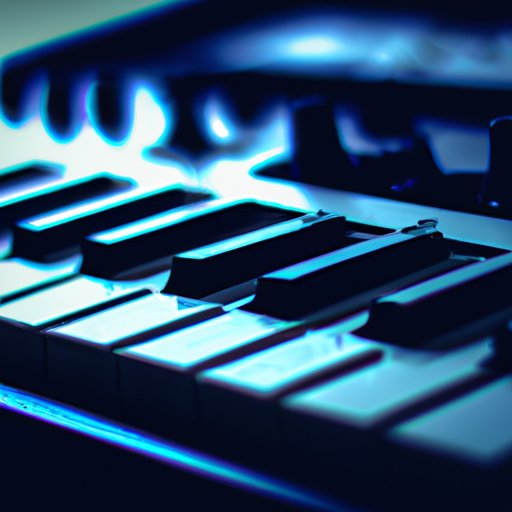Introduction
Techno music has been around for decades, with its roots in Detroit in the 1980s. It’s a type of electronic dance music that is characterized by repetitive beats and heavy basslines. If you’re a fan of techno music and want to learn how to play it on a keyboard, you’ve come to the right place. This article will teach you the basics of playing techno music on a keyboard, from programming your instrument to creating your own unique sound.
Learn How to Program Your Keyboard
Before you can start playing techno music on your keyboard, you need to program it. Programming is the process of assigning specific notes and sounds to the keys of your keyboard. This allows you to create complete melodies and rhythms without having to manually enter each note. Programming a keyboard is relatively easy, but it does require some knowledge of music theory.
The first step in programming your keyboard is to decide which sounds you want to use. You can choose from a variety of different instruments, including pianos, synthesizers, drums, and more. Once you’ve selected the sounds you want to use, you can assign them to the keys of your keyboard. Most keyboards have a “programming mode” that allows you to quickly assign sounds to the keys. You can also adjust the volume and other parameters of each sound.
Once your keyboard is programmed, you’ll be able to create your own melodies and rhythms. You can start by playing simple patterns and gradually build up to more complex ones. Experiment with different sounds and combinations to get a feel for what works best.
Explore Different Techno Sounds
Once you’ve mastered the basics of programming your keyboard, it’s time to explore the world of techno music. Techno music is made up of a variety of different sounds, ranging from classic analog synths to modern digital samples. You can find a wide selection of pre-made sounds online, or you can create your own using a software synthesizer. Experimenting with different sounds is an essential part of learning how to play techno music on a keyboard.
When creating your own sounds, it’s important to consider the characteristics of the genre. Techno music is generally characterized by hard-hitting drums and basslines, as well as soaring leads and textures. To create a truly unique sound, try experimenting with different synthesis techniques and effects. For example, you can use filters to sculpt the sound of your lead lines, or use delay and reverb to add depth and space.
Understand Digital Effects
Digital effects are an essential part of any techno production. They allow you to manipulate and enhance the sound of your tracks in a variety of ways. The most common digital effects are reverb, delay, and chorus. Reverb adds a sense of space and depth to a track, while delay creates an echoing effect. Chorus adds a thick, shimmering texture to a track. Each of these effects can be used to great effect in techno music.
To get the most out of your digital effects, experiment with different settings and combinations. Try adding subtle reverb to a lead line, or using a long delay on a drum loop. With enough experimentation, you’ll be able to create unique and interesting sounds that will take your productions to the next level.
Develop Your Own Style
Once you’ve mastered the basics of programming and exploring different sounds, it’s time to develop your own unique style. Every producer has their own approach to making music, and it takes time to find yours. Start by listening to a variety of techno tracks and taking note of the elements that you like. Then, practice playing with those elements and experimenting with different sounds and effects.
As you continue to practice, you’ll start to develop your own unique style. It’s important to keep an open mind and be willing to experiment. Don’t be afraid to try something new – it might just be the key to unlocking your own unique sound.
Conclusion
Learning how to play techno music on a keyboard can be a rewarding and enjoyable experience. By following these steps, you’ll be able to program your keyboard, explore different sounds, understand digital effects, and develop your own unique style.
(Note: Is this article not meeting your expectations? Do you have knowledge or insights to share? Unlock new opportunities and expand your reach by joining our authors team. Click Registration to join us and share your expertise with our readers.)
